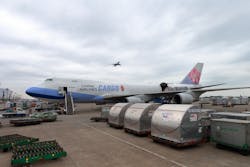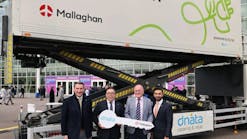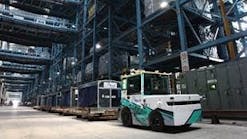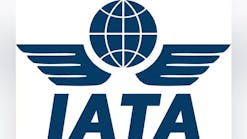Situated in the vast expanse of water called the Taiwan Strait in the East Asia region, the planners at the Taiwan Taoyuan International Airport (TTIA), located in Taoyuan County in the northwestern area of Taiwan and some 25 miles from the downtown area of Taipei City, have gone on an expansion course to meet the anticipated demand growth and also the ensuing infrastructure upgrading that will be required.
Aviation experts, closely monitoring the airport’s expansion, have been talking about its new Terminal 3 (T3) which airport officials say “simply elevates its prospects of becoming a hub” in the region. The airport’s traffic will be considerably boosted and provide new levels of service, enhance operational efficiency and convenience to passengers. It is also the single largest public engineering project currently underway in the island nation.
According to the airport planners, the new T3 is set to open in three stages, starting in 2024. The $3 billion terminal is “badly needed,” according to Lin Kuo-Shian, the chairman of the Taoyuan International Airport Corp. (TIAC), a government-owned corporation responsible for the management of the TTIA. The airport had already exceeded in 2019 its annual capacity of the existing terminals at the airport when it handled more than 48.6 million passengers.
Lin explains that the sharp drop in passenger traffic during the pandemic caused major airports around the world to suffer large losses.
“Many international airports have stopped operation, or have even closed. Taiwan Taoyuan International Airport also ran a deficit in these two years. However, TTIA’s progress has not stopped, because passenger and cargo traffic of the country rely on air transportation: Taiwan’s exports are still growing and therefore boost the freight during the pandemic. This is critical to the national economy. What we hope is that more people and goods in neighboring countries can transfer or process at TTIA. The higher density will make it more convenient for people to enter and exit,” Lin says.
Cargo Warehousing and Transport Facilities Expansion
Lin says that the 2040 cargo traffic at the airport is expected to exceed 4.02 million metric tons; the airport plans to develop a new 100-hectare air cargo park and the second free trade port in the airport northeast.
“These projects, scheduled to be completed in 2030, will be the twin engines powering TTIA's future air cargo growth. The entire area has adopted a design ethos that emphasizes 3D warehousing, smart technology and automation, with central management replacing the current decentralized model,” he says.
TIAC, which plans to put all future air cargo entrepots and warehousing facilities in the air cargo park, will draft management norms and standards that regulate personnel management, vehicle connections and each point of cargo facilitation, such as entering and exiting warehouses and loading docks. In response to the ever-growing demand for cross-border and cold chain logistics, TIAC will install equipment such as express storage facilities and temperature controlled warehouses, and will urge incoming businesses to acquire relevant international certification.
The TIAC chairman also points out that the planned National Freeway 1A on the east side of the airport would connect to the National Freeway No. 1 at one end, and Taiwan Provincial Highway No. 61 at the other, thus enabling vehicles to reach the Port of Taipei in as quickly as 15 minutes. This connection would form what Lin calls the "sea-jet-one" (combined sea and air transport) service that shortens cargo transport time and raises efficiency.
The objective, he adds, is to turn Taiwan into an important transshipment, logistics and added-value base in East Asia.
In 2020 the TTIA processed 2.34 million tons – a year-over-year growth rate of 7.35 percent, and 2.81 million in 2021 – a year-over-year growth rate of 20.03 percent. Through the first quarter of 2022, the airport has processed 238,251 tons of cargo.
GSE Requirements for TTIA’s Modernization
Lin says that the ground handling needed for TTIA’s overall modernization program will focus on building a net-zero emission airport by 2050.
The Airports Council International (ACI) has been globally promoting the "net zero carbon emissions by 2050" campaign to achieve environmental sustainability in the aviation industry. The TTIA, Lin says, is supporting the ACI’s initiative by taking a proactive approach to climate change mitigation.
“We encourage ground handlers to replace diesel engine vehicles with electric vehicles. TTIA has also accelerated the electrification of infrastructure by increasing charging piles in both the airside and landside to 180 sets. We meet regularly with ground handlers and around 70 stakeholders to review energy consumption and carbon emission patterns,” Lin explains, adding that the airport’s efforts have been recognized by the ACI Green Airport Recognition (GAR) for four consecutive years since 2019.
The Present and Future
As has been the case with many airports around the world, the sharp drop in passenger traffic during the epidemic caused huge losses. Indeed, a number of international airports stopped their operation, or even closed.
The pandemic was used by the TTIA to push the progress of various renovation projects, including the replacement of facilities and equipment in Terminal 1 and Terminal 2, as well as resurfacing the south and north runways. Lin emphasizes that the airport’s goal “is to become an important hub in East Asia.”
“And our development plan is not stopped by the pandemic,” he continues. “The construction of T3, which will give us an annual capacity of 45 million passengers, is in full swing. T3 is expected to open in three phases from 2024 to 2026, offering a refreshing experience in terms of terminal building, space, facilities and services.”
The north side expansion of the airport, including the construction of the third runway (R3) that will increase the capacity for takeoff and landing, is to prepare TTIA for the next level of development. R3 will enable TTIA to meet the needs of future traffic growth. The air cargo park and the second free trade port will expand the processing capacity of air logistics. TTIA continues to provide a high-quality and convenient environment for the circulation of passenger and freight, in order to boost tourism, industry and economic development in Taiwan.
Building TTIA as an East Asian Hub
TTIA officials point out that the airport’s growing importance can easily be seen from its ranking on the ACI list of top 10 airports for international freight (the 6th in 2019, 4th in 2020 / 2021). The 2021 top five are all East Asia airports, including Hong Kong International Airport, Incheon International Airport, Shanghai Pudong International Airport, Taiwan Taoyuan International Airport and Tokyo Narita International Airport – in ranking order.
“TTIA’s advantage over the other four is its central location in the region connecting East-North Asia, East-South Asia and the Oceania. On top of that, our home carriers developed dense routes to China, Europe and North America,” the TTIA chairman maintains.
Since the outbreak of the pandemic during 2020-2021, TTIA has continued to operate as a hub in East Asia because, as airport officials emphasize, “Taiwan managed the pandemic effectively.”
TTIA not only maintains its already ample cargo volumes, but has also obtained additional international cargo traffic from nations whose capacities were affected by the pandemic. Also, thanks to TTIA’s promotion of IATA's CEIV Pharma program four years ago, by March 2021 three domestic carriers and a ground handler, including Eva Air, China Airlines and Evergreen Airline Services Corp., had obtained the CEIV Pharma certification, which raised TTIA’s ability both to handle cargo that requires controlled temperatures and to garner market share of the cold-chain logistics market.
“Finally, lock-downs and working-from-home lifestyle brought by the pandemic have boosted the importance and export volumes of Taiwan’s semiconductor and 3C industries,” Lin says.
The island’s strategists say that Taiwan’s geographical position as “the heart of East Asia” has also helped the airport benefit from the global development. R3 will enable TTIA to meet the needs of future traffic growth. Besides, the air cargo park and the second free trade port are expected to expand the processing capacity of air logistics.






